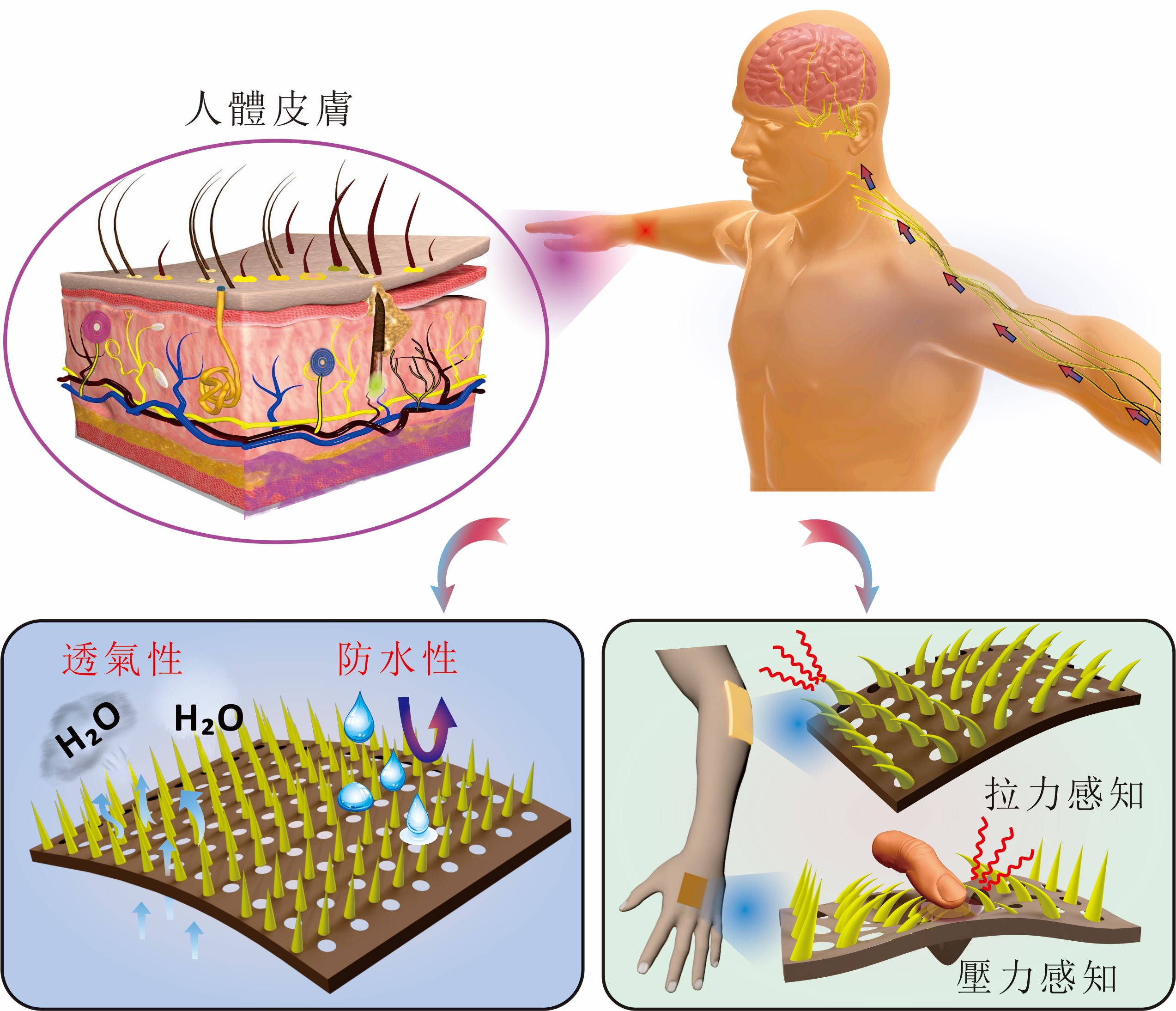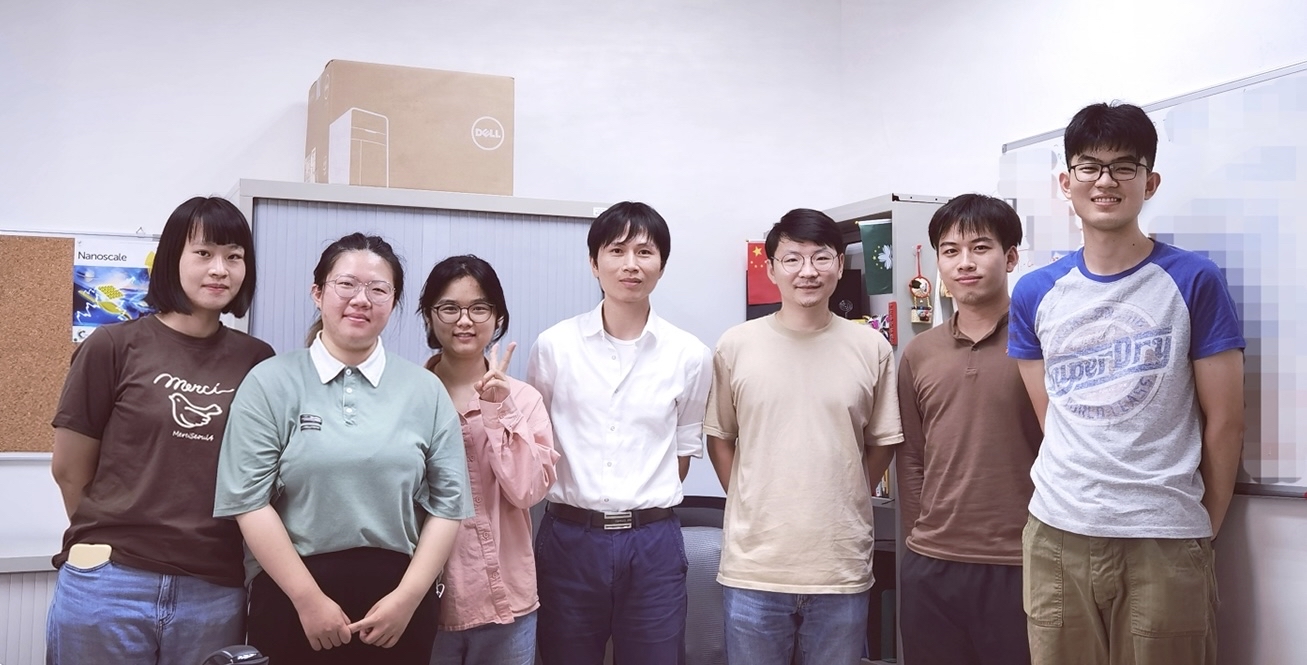A research team led by Zhou Bingpu, assistant professor in the Institute of Applied Physics and Materials Engineering (IAPME), University of Macau (UM), has designed a breathable and waterproof electronic skin (e-skin). The highly sensitive e-skin can recognise and distinguish between pressure and strain from the environment and is expected to be applied in fields such as real-time health monitoring, human-machine interaction, environmental perception, and intelligent control. The research result has been published in ACS Nano, a leading international journal in the field.
The skin, as the largest organ of the human body, plays an important role in the real-time interaction between people and their surroundings. With the emergence of flexible electronics, soft robotics, and prosthetics, the field of flexible e-skin that can mimic the sensory functions of human skin has been growing rapidly in recent years and has attracted a lot of attention. In addition to having perfect tactile perception, e-skin should also be breathable and waterproof, allowing it to be worn for long periods of time and used in different scenarios.
With this in mind, the research team has designed a flexible e-skin with a porous and three-dimensional surface microstructure. Via the synergy of magnetic force, surface tension, gravity and nano-aggregation, the three-dimensional structure and porous surface of the e-skin are formed automatically when an external magnetic field is applied. With multiple parameters being coordinated by the team, the e-skin is able to recognise and distinguish pressure and strain from the environment and the human body. The porous structure also allows for sweat evaporation to enable a comfortable wearing experience. In addition, the waterproof function can avoid liquid interference, which is one of the common issues of e-skin systems. The study comprehensively shows the sensing capabilities of the e-skin, including the recognition of facial expression, dynamic monitoring of foot pressure, and detection of joint bending. Furthermore, thanks to the ability to output non-overlapping electrical signals in response to different tactile inputs (pressure and strain), the e-skin also demonstrates the advantages of being used in different human-machine interfaces, such as Morse code communication, robot control, and multi-command systems.
The corresponding authors of the paper are Prof Zhou, and Prof Xu Qingsong in the Faculty of Science and Technology. The first author of the paper is PhD student Lei Ming in the IAPME. This study was funded by the Science and Technology Development Fund, Macao SAR (File no: 0088/2021/A2 and 0026/2020/AGJ). The full version of the paper can be viewed at https://doi.org/10.1021/acsnano.2c04188
| Source: Institute of Applied Physics and Materials Engineering | |
| Media Contact Information: | |
| Communications Office, University of Macau | |
| Albee Lei | Tel: (853) 8822 8004 |
| Cathy Cheang | Tel: (853) 8822 8009 |
| Email: | prs.media@um.edu.mo |


